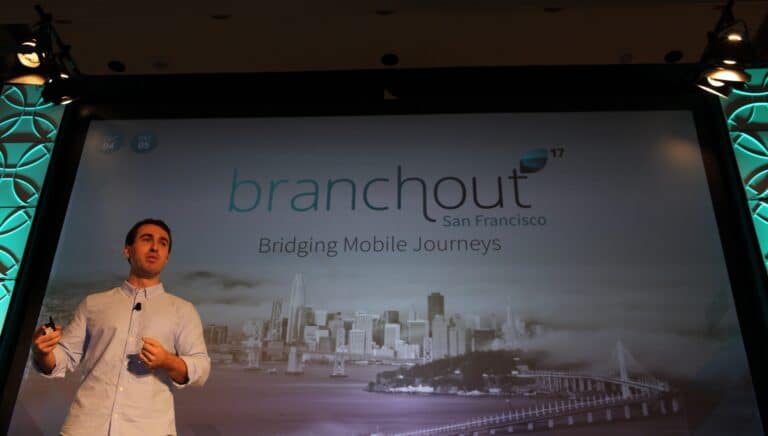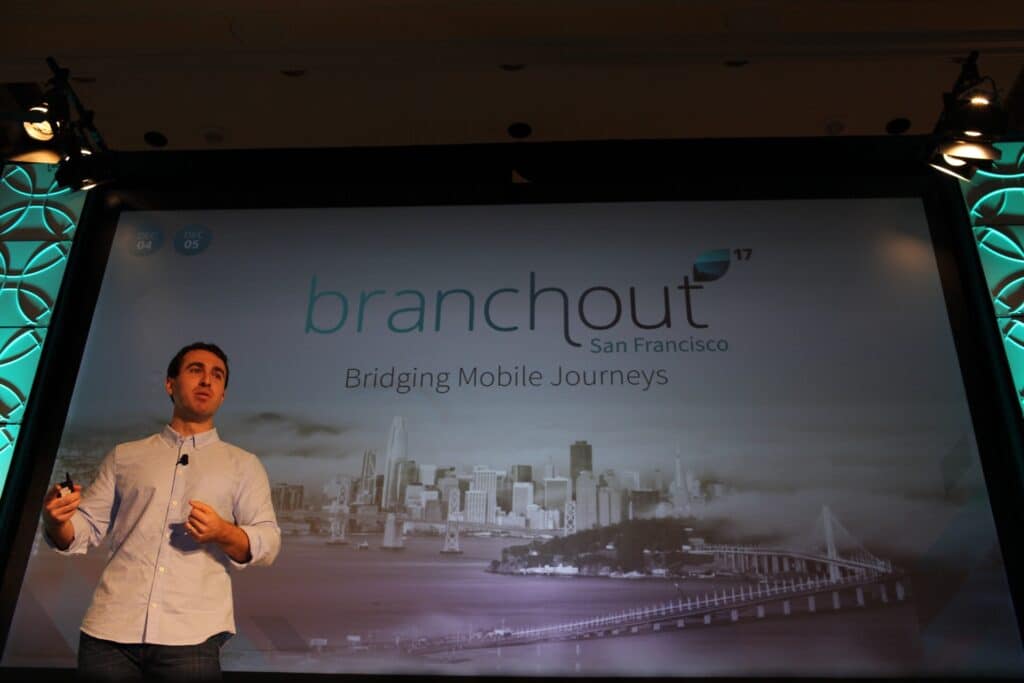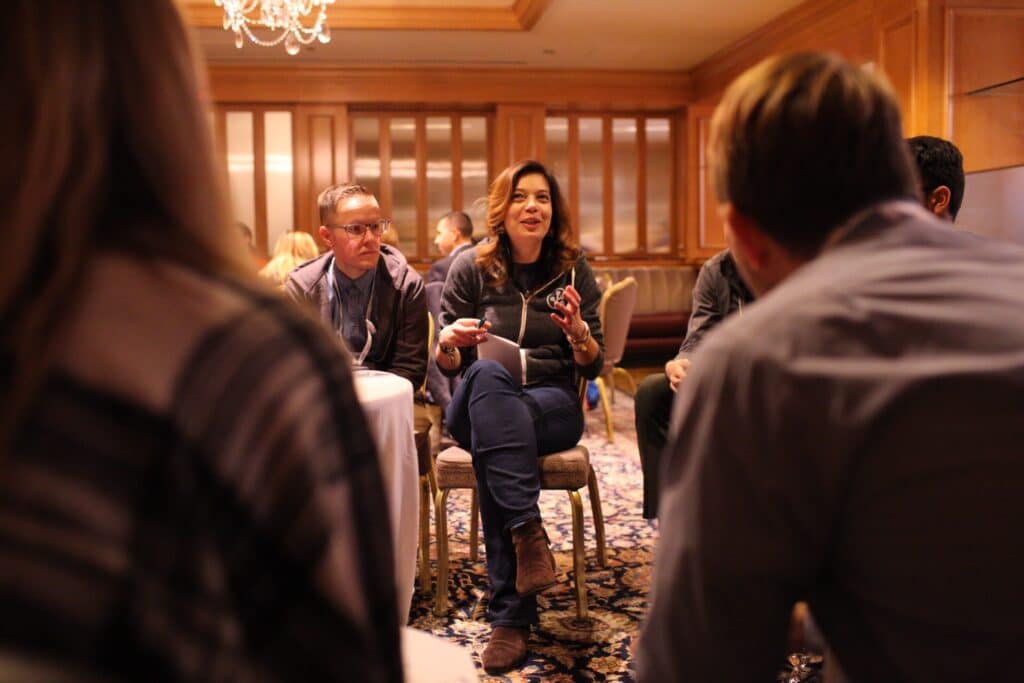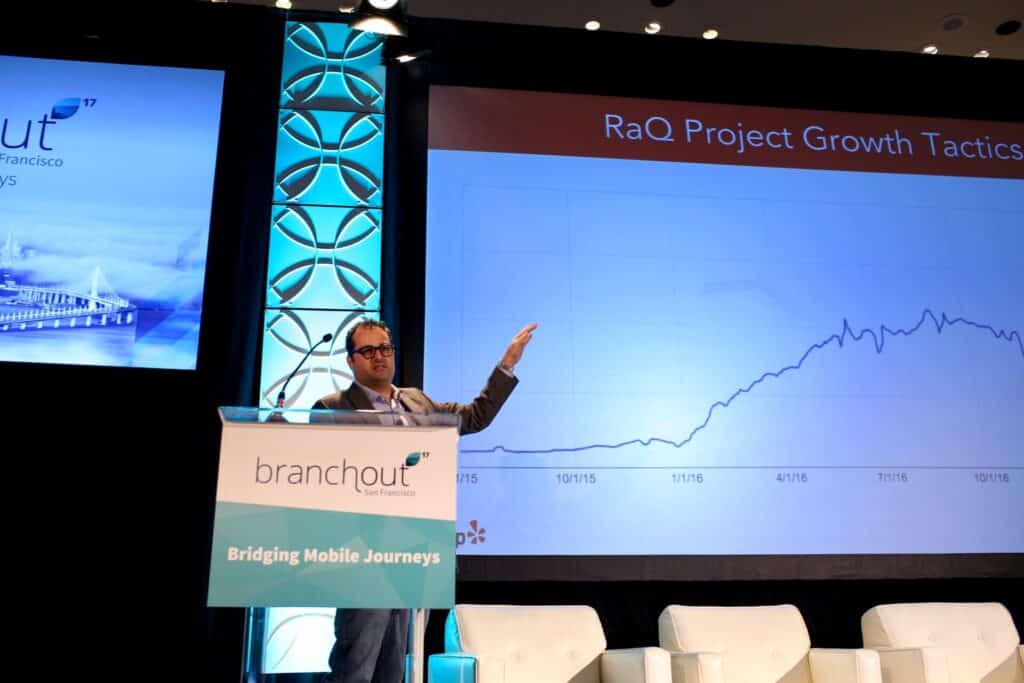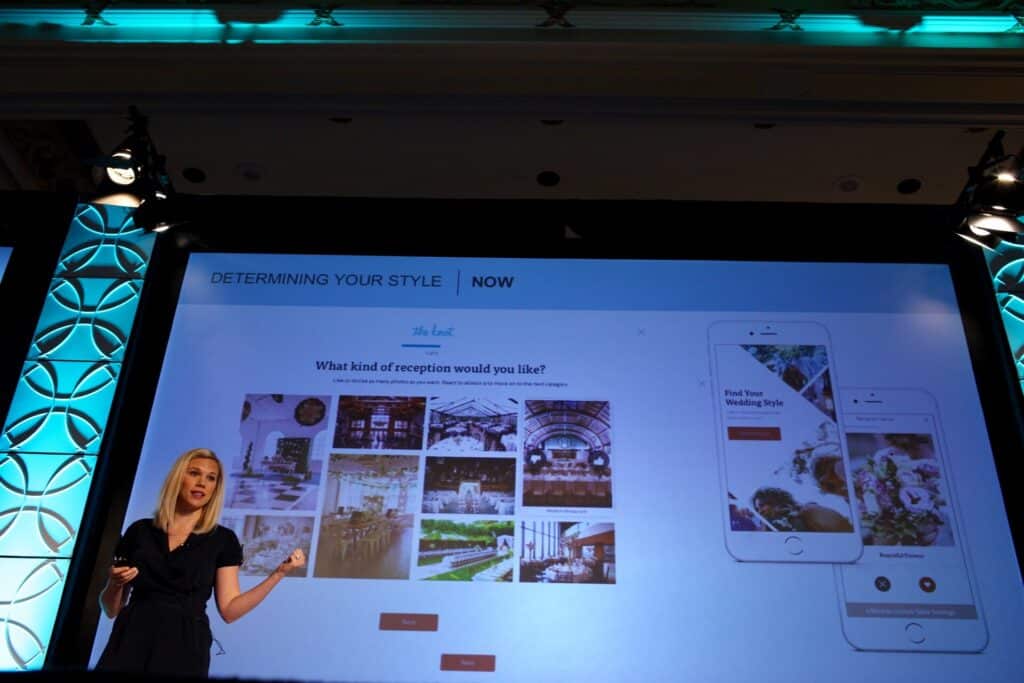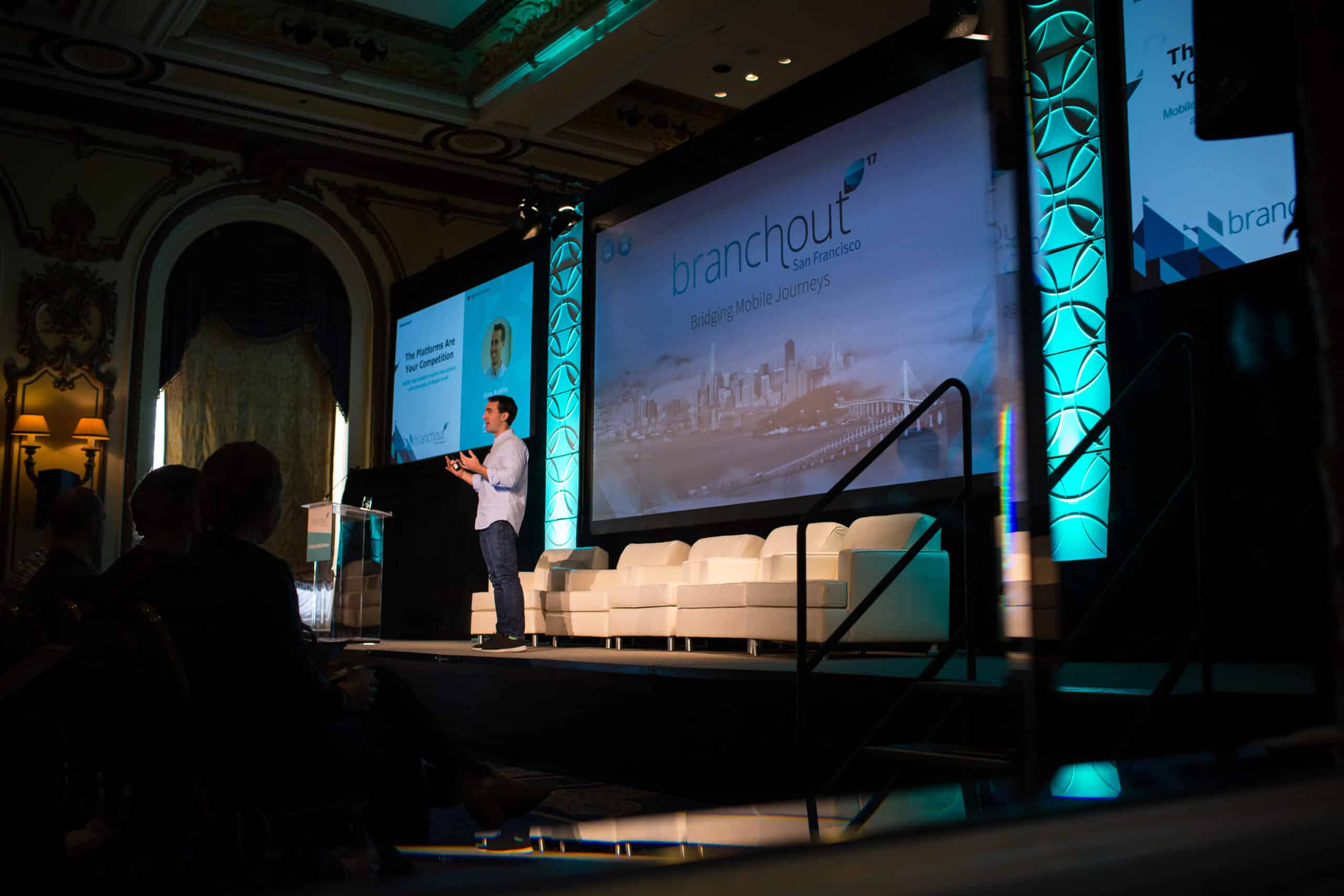Last week, we held the inaugural Branchout Conference, the first-ever industry event focused on what we can do together to overcome the increased fragmentation of the mobile ecosystem, and how we can survive and thrive in this rapidly evolving mobile world. In numbers, Branchout was:
- 2 days
- 4 networking sessions
- 354 attendees
- 28 roundtables
- 16 keynotes
- 5 panel discussions
- Countless exchanges of ideas, tips, and best practices
Thank you to all the incredible speakers, attendees, staff members, and volunteers that made Branchout two days of collaboration, inspiration, and growth. If you are looking for the content from the conference, you can find all the videos from the sessions here. You can also check out our Twitter hashtag, #branchout17, for a catalogue of Branchout 2017’s most quotable moments.
Here are the main themes that Branchout was centered around:
Mobile is the new battleground
A big trend we saw across all facets of the conference was the growth of mobile. During his keynote talk, Facebook Measurement Partnerships Program Manager Toby Roessingh shared that Facebook currently receives 90% of its ad revenue from mobile—that’s because, according to Facebook’s research, people absorb content more quickly on mobile: 2.5 seconds vs. 1.7 seconds (a whole 30% faster!). As Toby himself says, “People are zoned in: they have their blinders on.”
Our panel entitled “Rethinking Growth & Retention in the Mobile Age – Strategies for Commerce Startups and Companies at Scale” brought mobile experts from Beachbody, Stitch Fix, Tradesy, and Dollar Shave Club into an insightful conversation about how to optimize user acquisition, engagement, and conversion in today’s mobile world. While each admitted that mobile web remains an easier channel for user acquisition, the experts were unanimous: you need a way to bring your users from the mobile web into your app, because app users engage and convert at substantially higher rates than mobile web users. In fact, this is a trend that was raised by a number of speakers on other panels, including Peter Gray, Director of Optimization at Wall Street Journal, who shared that the WSJ native app allows his team to monetize users far better, while also personalizing user experiences.
Fragmentation and walled gardens are only expanding
Fragmentation is is one of the most pressing issues in the industry—it plagues nearly everything we as mobile marketers and developers do—but it continues to get relatively little airtime. There’s an undeniable battle between Facebook, Google, and Apple for our attention, rendering it incredibly challenging to maintain unified user experiences and measurement across each platform’s walled garden. The solution? Take advantage of the platforms, and build your own gardens. Check out Branch co-founder & CEO Alex Austin’s keynote and my talk, The Importance of Building a Cross-Platform Strategy, to learn how.
Fragmentation and new platforms lead to arbitrage opportunities
ASO for both the Android Google Play Store and the Apple App Store is one way that a number of mobile brands take advantage of platforms and their fragmentation. In their Branchout keynotes, ASO expert Emily Grossman walked us through basic and advanced tips for SEO optimization and PopSocial Founder Everette Taylor walked us through leveraging Instagram and influencer marketing to increase organic mobile user acquisition. Our smaller roundtable talks ranged in topic from leveraging Facebook install ads in order to drive app awareness and top charts, to using algorithms to land on the front page of Reddit, to tapping into secret Kik networks through which twelve-year-old influencers can push products through dozens of mini-networks of followers.
The conclusion? None of these advantages last. You have to keep testing new platforms and features in order to identify and leverage arbitrage opportunities that can result in cheap, fast growth for your brand.
Virality and growth can exist in a fragmented mobile ecosystem
One of the main trends of Branchout 2017 centered around the shortening of both the average user’s attention span and the share cycles. Tinder’s Director of Product Management – Revenue, Jeff Morris, mentions in our Fireside Chat: Beyond Growth that Tinder’s real innovation was to leverage this shorter attention span and create decision situations that only take 10-15 seconds; Viber’s Head of Product for North America, Nadav Melnick, also discussed methods of engaging users at different times in order to prolong their attention spans.
In addition, Charles Yong, co-founder of Collective Press, addressed ways of measuring these shorter cycles in his talk, “The First Impression: How to Fight Fragmentation with Fragmentation”. In his keynote “Growth Unhacking at Yelp”, Yelp Group Manager Effi Fuks-Leichtag even suggested the role of growth in leading mobile marketers’ toolkits is to “increase the units of something affecting your core business in a cost-effective manner over time” while measuring the actual probability of success per user per channel. (A lower probability would suggest slower growth, while a higher probability would signal faster growth.)
Fighting fragmentation requires qualitative and quantitative data
When it comes to measurement, we loved Abhi Kumar (Uber’s Head of Products – Onboarding)’s advice during our fireside chat, to ensure you don’t simply focus on metrics and data; you need to also do customer interviews to access intangible metrics that wouldn’t otherwise show up in your metrics dashboards. In his keynote “The Only Metric That Matters”, Greylock Partners’ Josh Elman shared best practices for building user-centric products and learning to spot and understand your best users (or “core users”)—users for whom you are top of mind, users who keep coming back. Specifically, Elman suggested ensuring that when you build sharing plans and programs, you’re tracking those core users and influencers with Branch.
Another topic that repeatedly surfaced was the importance of personalizing the mobile experience, addressed by both WSJ’s Peter Gray and Dollar Shave Club’s Ashley Lewis as a key differentiator for their app. Furthermore, in her keynote “How StubHub Optimized the the User Path Across Platforms”, Stubhub Lead Project Manager Lauren Chan Lee stresses the importance of A/B testing new features—her team usually sends 50% of users to the old experience and 50% of users to the new experience.
The importance of user-centricity cannot be overstated
One of the most frequently-discussed topics at Branchout was the challenge of being user-centric in an increasingly mobile ecosystem. For instance, in her keynote “Driving Agile Mobile Innovations Across Departments: The Role of Product Marketing at The Knot“, Amanda Goetz (Head of Consumer & Product Marketing for the XO Group) raises the challenge of being internally user centric, and even provides a model for how marketing, product, and engineering can collaborate to keep the user at the center of the experience they build together.
Furthermore, our panel “Rethinking Growth & Retention in the Mobile Age – Strategies for Commerce Startups and Companies at Scale” (moderated by NEA’s Ben Narasin) also touched on how essential it can be to maintain multiple touch points while creating a seamless cross-platform, cross-channel experience for each user. In fact, Lyft’s Sigal Bareket and Facebook’s Bowen Pan both delivered valuable insights on how to keep users at the core of your mobile ambitions, even when you have more than one type of users—in both cases, leading growth and product for different marketplaces.
Measurement: the universal challenge in a fragmented ecosystem
One of the most widespread challenges that comes with fragmentation, a challenge upon which nearly every speaker touched, is measurement. In his talk “The Only Metric That Matters”, Greylock Partners’ Josh Elman suggested avoiding anecdotes, identifying one key metric, and measuring that metric across all platforms.
“The plural of anecdote is data.” — @GreylockVC Partner @joshelman #branchout17 pic.twitter.com/M0nBni5pEs
— Branch (@branchmetrics) December 5, 2017
On our “Ultimate Mobile Growth Panel”, Yelp Group Manager Effi Fuks-Leichtag cautioned that many companies select vanity metrics that look good but don’t matter—he challenged our attendees to find a metric that actually matters, even if it doesn’t look as good, and to keep measuring and improving it, even if it’s difficult. While sharing the stage with Effi, Robinhood VP of Product Engineering Joe Binney laid out his only metric that matters: the rate of users who reach the magic moment in an app, the moment when a user becomes truly engaged. Ankur Prasad, Head of Marketing for Amazon’s Appstore, built upon this by sharing his methods of measuring user delight and surprise from tactics that form these magic moments throughout Amazon’s digital experience.
Suffice it to say, the Branchout 2017 stage held valuable insights for all—across industries, stages of development, and levels of experience. Again, if you’re interested to learn more, you can find all Branchout 2017 recorded sessions here, and all the Branchout 2017 slides here.
We hope you will join the conversation next year at Branchout! You can sign up to receive exclusive updates about Branchout 2018 by clicking here.






















